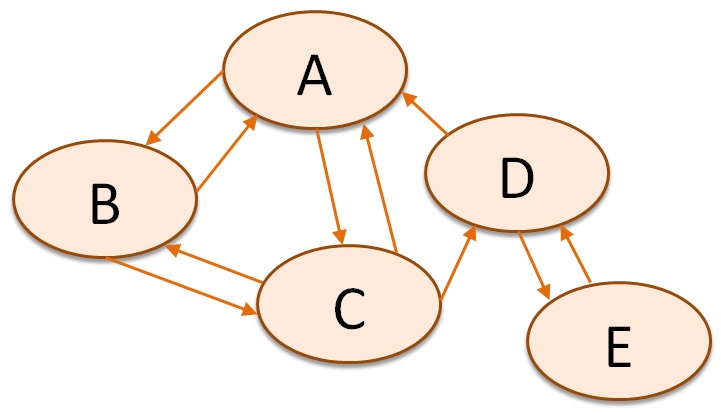Webometrics on:
[Wikipedia]
[Google]
[Amazon]
The science of webometrics (also cybermetrics) tries to measure the  One relatively straightforward measure is the "Web Impact Factor" (WIF) introduced by Ingwersen (1998). The WIF measure may be defined as the number of web pages in a web site receiving links from other web sites, divided by the number of web pages published in the site that are accessible to the crawler. However the use of WIF has been disregarded due to the mathematical artifacts derived from power law distributions of these variables. Other similar indicators using size of the institution instead of number of webpages have been proved more useful.
One relatively straightforward measure is the "Web Impact Factor" (WIF) introduced by Ingwersen (1998). The WIF measure may be defined as the number of web pages in a web site receiving links from other web sites, divided by the number of web pages published in the site that are accessible to the crawler. However the use of WIF has been disregarded due to the mathematical artifacts derived from power law distributions of these variables. Other similar indicators using size of the institution instead of number of webpages have been proved more useful.
World Wide Web
The World Wide Web (WWW), commonly known as the Web, is an information system enabling documents and other web resources to be accessed over the Internet.
Documents and downloadable media are made available to the network through web ...
to get knowledge about the number and types of hyperlink
In computing, a hyperlink, or simply a link, is a digital reference to data that the user can follow or be guided by clicking or tapping. A hyperlink points to a whole document or to a specific element within a document. Hypertext is text w ...
s, structure of the World Wide Web and using patterns. According to Björneborn and Ingwersen, the definition of webometrics is "the study of the quantitative aspects of the construction and use of information resources, structures and technologies on the Web drawing on bibliometric and informetric approaches." The term ''webometrics'' was first coined by Almind and Ingwersen (1997). A second definition of webometrics has also been introduced, "the study of web-based content with primarily quantitative methods for social science research goals using techniques that are not specific to one field of study", which emphasizes the development of applied methods for use in the wider social sciences. The purpose of this alternative definition was to help publicize appropriate methods outside of the information science discipline rather than to replace the original definition within information science.
Similar scientific fields are: bibliometrics
Bibliometrics is the use of statistical methods to analyse books, articles and other publications, especially in regard with scientific contents. Bibliometric methods are frequently used in the field of library and information science. Bibliom ...
, informetrics, scientometrics, virtual ethnography
Online ethnography (also known as virtual ethnography or digital ethnography) is an online research method that adapts ethnographic methods to the study of the communities and cultures created through computer-mediated social interaction. As mo ...
, and web mining.
 One relatively straightforward measure is the "Web Impact Factor" (WIF) introduced by Ingwersen (1998). The WIF measure may be defined as the number of web pages in a web site receiving links from other web sites, divided by the number of web pages published in the site that are accessible to the crawler. However the use of WIF has been disregarded due to the mathematical artifacts derived from power law distributions of these variables. Other similar indicators using size of the institution instead of number of webpages have been proved more useful.
One relatively straightforward measure is the "Web Impact Factor" (WIF) introduced by Ingwersen (1998). The WIF measure may be defined as the number of web pages in a web site receiving links from other web sites, divided by the number of web pages published in the site that are accessible to the crawler. However the use of WIF has been disregarded due to the mathematical artifacts derived from power law distributions of these variables. Other similar indicators using size of the institution instead of number of webpages have been proved more useful.
See also
* Altmetrics *Impact factor
The impact factor (IF) or journal impact factor (JIF) of an academic journal is a scientometric index calculated by Clarivate that reflects the yearly mean number of citations of articles published in the last two years in a given journal, as ...
* PageRank
* Network mapping
Network mapping is the study of the physical connectivity of networks e.g. the Internet. Network mapping discovers the devices on the network and their connectivity. It is not to be confused with network discovery or network enumerating which d ...
* Search engine
A search engine is a software system designed to carry out web searches. They search the World Wide Web in a systematic way for particular information specified in a textual web search query. The search results are generally presented in a ...
* Webometrics Ranking of World Universities The Webometrics Ranking of World Universities, also known as Ranking Web of Universities, is a ranking system for the world's universities based on a composite indicator that takes into account both the volume of the Web content (number of web page ...
References
Bibliography
* * * * * * * Web analytics Information science Information retrieval techniques {{web-stub